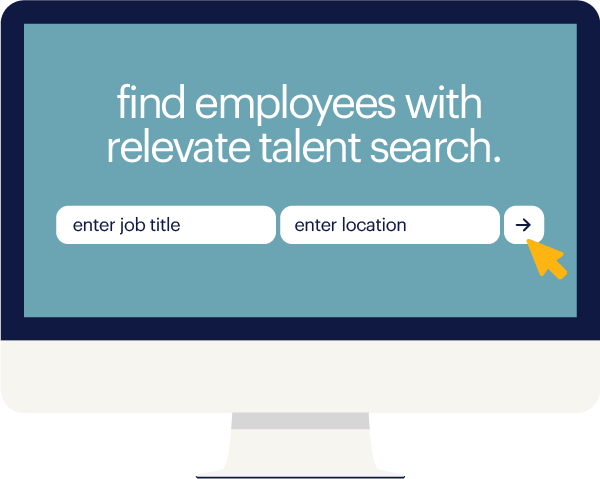The race is on to hire civil and structural engineers: According to labor-insights provider Burning Glass, more than 100,000 job ads went up for these roles in the last year alone. And if you think there was enough qualified talent to easily fill all of those positions, think again. If your company is on the lookout for these engineering pros, this will be a tough nut to crack for the foreseeable future.
Given how essential civil and structural engineers are to the design and execution of construction projects large and small, you can't afford to be bogged down by a long hiring process. So how do you go about hiring quality engineers fast when they're already so hard to find?
These steps can get the wheels turning on your hiring process:
1. streamline your hiring practicesReady to jump in and see what you can do today to address these points? Read on below.
1. speed up your hiring process
If it's been a while since you audited your hiring process, it's time to see if you're finding talent in the most efficient way. Compare your process to the diagram below to see where you can fine-tune your process for maximum efficiency:
2. develop a competitive compensation package
Civil and structural engineers are in high demand, so you'll need to come to the table with an attractive offer to get top candidates. But what makes for a competitive compensation package for these roles? Randstad's salary guide is a great place to start your research.
Keep in mind, too, that competitive salaries vary greatly by location, due to factors like differences in cost of living and local demand. To ensure your decision-making is informed by the most pertinent info, head over to our salary calculator to access the most up-to-date data for your specific market.
3. identify the top skills for civil and structural engineers
Different firms need engineers with different backgrounds, depending on the role's specific requirements, the industry, team structures and more. So to target the right hire, you'll need to determine exactly what your business needs in its civil and structural engineers.
Start by huddling with the hiring manager and other leaders who will work closely with the engineer to define the scope of the role. For example, decide whether your new hire will have full control over marrying visual appeal, costs, safety and functionality, or if they'll have a more limited focus on just one or two of those areas.
Next, determine what skills the ideal candidate should have. These come in two forms: skills that are absolutely necessary ("must-haves") versus those that would be great but aren't required ("nice-to-haves"). That could be the difference between knowing how to use civil 3D design software (essential) versus a deep knowledge of land development (probably a nice-to-have). Do this exercise with all the skills you're seeking in an engineer, as well as any credentials that may be necessary.
You should also ask questions like:
- Is it mandatory for the candidate to be already accredited by the American Board for Engineering and Technology (ABET)?
- Does the candidate need to have project management certification?
- Or can these be obtained while on the job?
To give you a head start on the process, here are the most sought-after skills for civil and structural engineers, according to job ads from the past 12 months:
project management
budgeting
AutoCAD
scheduling
structural design and failure analysis
calculation
communication
4. write an eye-catching job description
Think of your job description like a first date: If you really bore the person, you may never see them again. Here are three tips to writing engaging job ads that will attract qualified applicants and excite them to apply.
don't write like a robot
If your job description sounds like a robot wrote it, you wouldn't be the first to suffer that fate. With so much info to pack in — day-to-day responsibilities, desired qualifications, info about your company and more — it can be tempting to focus more on the information than the overall experience for the job applicant.
Remember, humans don't like robotic writing (at least not yet) or long lists of duties. What do they like? Clear, concise and relatable ads that focus on the human aspects of the role.
Plus, be sure to answer the questions candidates are likely to have about the role right off the bat:
- Will they lead a team of engineers? Whom will they report to?
- Will they partner directly with architects on designs and modifications?
- How much project management experience will they need to have in order to be successful from day one?
Answering questions like these can help applicants visualize themselves in the role and accurately measure expectations against their skills, career interests and goals.
write a job description that focuses on the human aspects of the role and answers candidates' top questions.
show how the job is meaningful
Today's workforce doesn't want to clock in and out at a pointless job that doesn't have meaning. So what should you include in your posting to show that the role is meaningful?
Think of the younger version of your applicant, who had big hopes and dreams of becoming an engineer. They care about civil safety, responsible community planning and the appeal of bringing an architect's vision to life. Highlight those aspects of the job in the description and you'll be sure to inspire your candidates to want to be a part of that larger purpose.
Don't forget to put a spotlight on your company's mission, values and internal culture — speaking specifically to your business's points of pride, like work-life balance, healthcare benefits and any opportunities for development or continuing education.
make it easy to skim
Long, bulky blocks of text that aren't clearly marked with subheadings may be the recruiter's single biggest enemy. Your goal in writing a job description should be to avoid that. Make it skimmable — not so that applicants don't actually read it, but so they can quickly move around the page and figure out whether yours is a job they're qualified for and want to apply to.
Here are a few key tips to make sure your job ad is easy to read and doesn't scare away potential applicants:
- No big blocks of text. Stick to short paragraphs.
- Always use descriptive subheadings ("The Role," "Our Mission") to break up sections.
- Keep sentences short and to the point.
- Don't use over-complicated language — be clear and accessible.
For a deeper dive on ways to hook potential applicants, read our guide to writing highly effective job descriptions.
5. brush up on the latest industry trends
To approach the hiring process intelligently, you'll want to take some time to get up to speed on the latest trends in the engineering industry. After all, you're going to have much more hiring to do after you've found your next civil or structural engineer, so you should be actively anticipating your company's future needs.
To start, here are a few of the latest trends you should know:
- Aging infrastructure across the U.S. and the advent of new materials and technologies are driving the lion's share of demand for civil and structural engineers.
- To attract qualified applicants, employers will need to amp up their benefits and perks packages, given that 66 percent of workers see these offerings as the most important factor when considering a job offer.
6. choose your channels to find candidates
With civil and structural engineers so hard to come by, you don't want to risk embarking on a never-ending quest for quality talent (or worse, hire the wrong person). And with a seemingly endless number of ways to go about a job search, looking in the right places is more important than ever.
That said, there is no one-size-fits-all approach to a talent search. The channels you choose to conduct your search will — and should — vary based on factors like your company size, the role you're filling and how much you'll be able to spend on recruitment efforts.
One way to make sure you go about hiring the right way is to seek the help of professional staffing firms. They know where to look for the right people — especially those hard-to-find passive candidates — thanks to their expertise in building relationships, together with their deep pools of screened and vetted candidates.
If you'd like to explore how a staffing firm can help you find your next great civil or structural engineer, reach out to one of Randstad's engineering experts to start a conversation. Or, you can browse our network of available candidates right now through our Find Employees portal.








